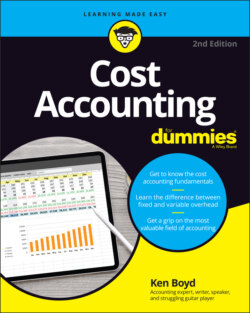Читать книгу Cost Accounting For Dummies - Kenneth W. Boyd - Страница 67
Lowering the breakeven point to reach profitability sooner
ОглавлениеThe lower the breakeven point, the easier it is to achieve your sales goal. It takes less effort to break even if you can lower the number of units you need to sell. Would you rather have to sell 100 units or 500 units just to break even? There’s a big difference in time, effort, and financial risk between 100 and 500 units. Think of less effort as taking less risk.
You reduce your breakeven point by changing any one of its components, if you can (and that’s sometimes a big if). Here are some techniques, using the well-worn software application as an example.
If you can change the costs or sales, you can reduce your breakeven point. To do so, make some changes to the earlier formula:
Increasing the sale price to $45 per unit:Contribution margin per unit = $45 – $20Contribution margin per unit = $25Breakeven point in units = $1,000 ÷ $25Breakeven point in units = 40
Reducing the variable cost to $15 per unit:Contribution margin per unit = $40 – $15Contribution margin per unit = $25Breakeven point in units = $1,000 ÷ $25Breakeven point in units = 40
Reducing the fixed cost to $800 per unit:Contribution margin per unit = $40 – $20Contribution margin per unit = $20Breakeven point in units = $800 ÷ $20Breakeven point in units = 40
In each case, you lowered the breakeven point in units to 40 units instead of 50. The result? It takes less selling effort — and requires less financial risk.
